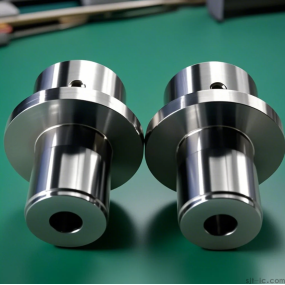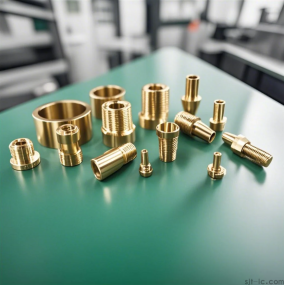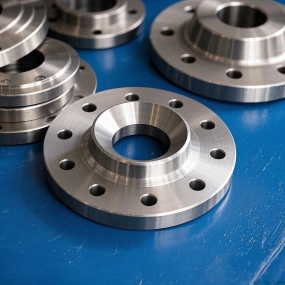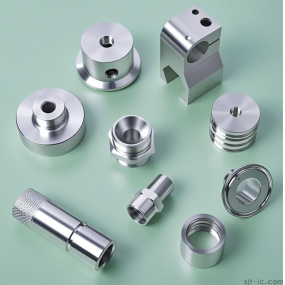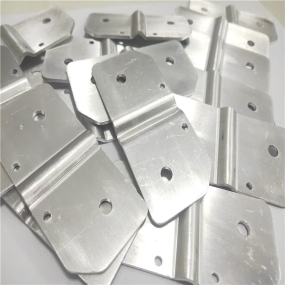1. Definition
Composite materials are new materials formed by optimizing and combining different properties of material components using advanced material preparation techniques. The general definition of composite materials requires the following conditions to be met:
(i) Composite materials must be artificial and designed and manufactured according to people's needs;
(ii) Composite materials must be composed of two or more material components with different chemical and physical properties, combined in the designed form, proportion, and distribution, with clear interfaces between each component;
(iii) It has structural designability and can be used for composite structure design;
(iv) Composite materials not only maintain the advantages of the performance of each component material, but also achieve comprehensive performance that cannot be achieved by a single component material through the complementarity and correlation of the performance of each component.
The matrix materials of composite materials are divided into two categories: metallic and non-metallic. Commonly used metal substrates include aluminum, magnesium, copper, titanium, and their alloys. Non metallic substrates mainly include synthetic resins, rubber, ceramics, graphite, carbon, etc. The main reinforcing materials include glass fiber, carbon fiber, boron fiber, aramid fiber, silicon carbide fiber, asbestos fiber, whiskers, and metals.

2. Classification
Composite materials are a mixture. It has played a significant role in many fields, replacing many traditional materials. Composite materials are divided into metal to metal composite materials, non-metal to metal composite materials, and non-metal to non-metal composite materials according to their composition. According to its structural characteristics, it can be further divided into:
① Fiber reinforced composite materials. Composite various fiber-reinforced materials within the matrix material. Such as fiber-reinforced plastics, fiber-reinforced metals, etc.
② Laminated composite materials. Composed of surface materials and core materials with different properties. Usually, the surface material has high strength and is thin; The core material is light and has low strength, but it has a certain stiffness and thickness. It is divided into two types: solid sandwich and honeycomb sandwich.
③ Fine grained composite materials. Uniformly distribute hard fine particles in the matrix, such as dispersion strengthened alloys, metal ceramics, etc.
④ Hybrid composite materials. Composed of two or more reinforcing phase materials mixed in one matrix phase material. Compared with ordinary single reinforced phase composite materials, its impact strength, fatigue strength, and fracture toughness are significantly improved, and it has special thermal expansion properties. Divided into intra layer hybrid, inter layer hybrid, sandwich hybrid, intra/inter layer hybrid, and super hybrid composite materials.
Composite materials can be mainly divided into two categories: structural composite materials and functional composite materials.
Structural composite materials are materials used as load-bearing structures, which are basically composed of reinforcing elements that can withstand loads and matrix elements that can connect the reinforcing elements into a whole material while also transmitting forces. Reinforcements include various types of glass, ceramics, carbon, polymers, metals, as well as natural fibers, fabrics, whiskers, sheets, and particles, while matrices include polymers (resins), metals, ceramics, glass, carbon, and cement. Various structural composite materials can be composed of different reinforcing agents and matrices, and named after the matrix used, such as polymer (resin) based composite materials. The characteristic of structural composite materials is that they can be designed for component selection according to the requirements of the material's stress during use, and more importantly, composite structure design can also be carried out, that is, reinforcement arrangement design, which can reasonably meet the needs and save materials.
Functional composite materials are generally composed of functional body components and matrix components. The matrix not only plays a role in forming the whole, but also can produce synergistic or reinforcing functions. Functional composite materials refer to composite materials that provide physical properties other than mechanical properties. For example, conductivity, superconductivity, semiconductor, magnetism, piezoelectricity, damping, absorption, transmission, friction, shielding, flame retardancy, heat resistance, sound absorption, insulation, etc. highlight a certain function. Collectively referred to as functional composite materials. Functional composite materials are mainly composed of functional bodies, reinforcing bodies, and matrices. Functional bodies can be composed of one or more functional materials. Multi functional composite materials can have multiple functions. Meanwhile, it is also possible to generate new functions due to composite effects. Multi functional composite materials are the development direction of functional composite materials.
Composite materials can also be divided into two categories: commonly used and advanced.
Common composite materials such as fiberglass are composed of low performance reinforcements such as glass fibers and ordinary high polymers (resins). Due to its low price, it has been widely used in various fields such as ships, vehicles, chemical pipelines and storage tanks, building structures, and sports equipment.
Advanced composite materials refer to composite materials composed of high-performance heat-resistant polymers such as carbon fiber and aramid. Later, metal based, ceramic based, carbon (graphite) based, and functional composite materials were also included. Although they have excellent performance, their prices are relatively high, mainly used in the defense industry, aerospace, precision machinery, deep-sea submersibles, robot structural components, and high-end sports equipment.
3. Application
The main application areas of composite materials are:
① Aerospace field. Due to their good thermal stability, high specific strength, and stiffness, composite materials can be used to manufacture aircraft wings and forebodies, satellite antennas and their supporting structures, solar cell wings and shells, large launch vehicle shells, engine shells, space shuttle structural components, etc.
② The automotive industry. Due to the special vibration damping characteristics of composite materials, they can reduce vibration and noise, have good fatigue resistance, are easy to repair after damage, and are easy to form as a whole. Therefore, they can be used to manufacture automobile bodies, load-bearing components, transmission shafts, engine mounts, and their internal components.
③ In the fields of chemical, textile, and machinery manufacturing. A material composed of carbon fiber and resin matrix with good corrosion resistance, which can be used to manufacture chemical equipment, textile machines, paper machines, copiers, high-speed machine tools, precision instruments, etc.
④ Medical field. Carbon fiber composite materials have excellent mechanical properties and non absorption of X-rays, and can be used to manufacture medical X-ray machines and orthopedic stents. Carbon fiber composite materials also have biocompatibility and blood compatibility, good stability in biological environments, and are also used as biomedical materials. In addition, composite materials are also used for manufacturing sports equipment and as building materials.
4. Zirconium phosphate modified composite material
In recent years, polymer/inorganic layered nanocomposites have attracted widespread attention due to their excellent properties in various aspects. Numerous studies have shown that the mechanical and thermal properties of composite materials can be significantly improved with a small content of nano inorganic fillers. At present, there have been many studies on the nanocomposites of inorganic layered materials such as montmorillonite and attapulgite with polymers, but there is relatively little research on polymer/zirconium phosphate nanocomposites.
The α - ZrP laminate has a stable structure and can maintain a relatively stable laminate even after the introduction of the guest into the interlayer. It also has a large ion exchange capacity and features controllable aspect ratio and narrow particle size distribution, making it suitable for the preparation of polymer/layered inorganic nanocomposites. To increase the interlayer spacing of zirconium phosphate, promote its delamination in the polymer matrix, and enhance the compatibility between zirconium phosphate layers and the polymer matrix, organic modification of a-ZrP is required. α - ZrP is generally modified with small molecule amines or alcohols through - OH protonation reactions or hydrogen bonding inside and outside their layers, and can also be intercalated with large molecules. However, due to the small interlayer spacing, it is difficult to directly intercalate large molecules, and usually requires small molecule pre support before exchanging with large molecules.
Long chain quaternary ammonium salts (DMA-CMS) were synthesized using octadecyldimethylamine (DMA) and p-chloromethylstyrene (CMS). The α - ZrP was pre supported with methylamine and then exchanged with DMA-CMS to obtain organically modified zirconium phosphate (ZrP. DMA. CMS). The organically treated zirconium phosphate was then melt blended with PS to prepare PS/organically modified zirconium phosphate nanocomposites, and their structure and properties were studied.
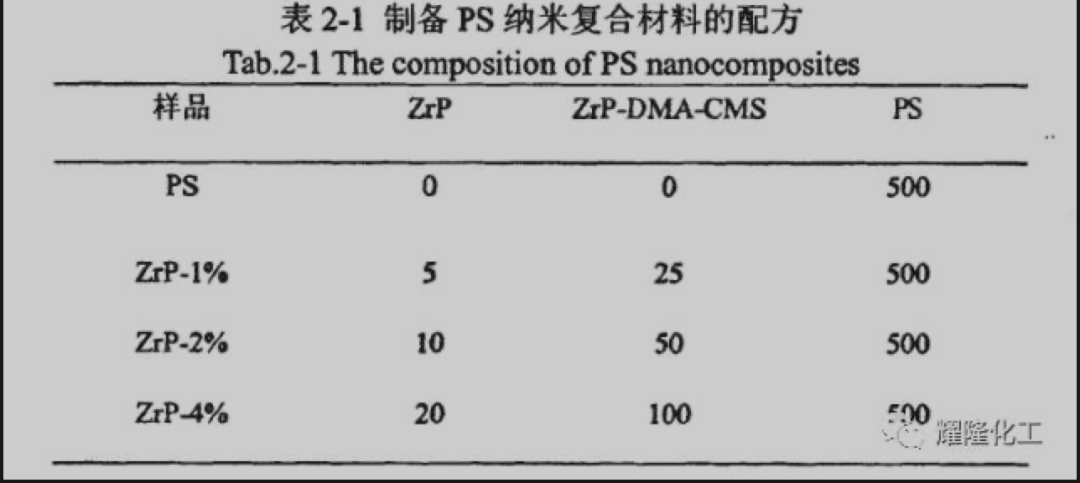
XRD analysis shows that long-chain quaternary ammonium salt DMA-CMS is relatively easy to insert between the layers of α - ZrP after methylamine pre support. After intercalation, the interlayer distance of zirconium phosphate increases from 0.8 nm to 4.0 nm, and the intercalation effect is significant. The nanocomposite material prepared by twin-screw extrusion of ZrP DMA-CMS modified zirconium phosphate (ZrP DMA-CMS) and PS further expands the interlayer spacing from 4.0 nm to 4.3 nm compared to ZrP DMA-CMS, with some polystyrene entering the interlayer of zirconium phosphate.
Mechanical analysis shows that when the content of zirconium phosphate is 1%, the tensile strength, elastic modulus, elongation at break, and impact strength of PS/organic modified zirconium phosphate nanocomposites are increased by 4%, 21%, 8%, and 43%, respectively. But with the increase of zirconium phosphate content, the tensile strength, elastic modulus, elongation at break, and impact strength of nanocomposites show a downward trend, and the strength, rigidity, and toughness of the material begin to decrease. The addition of an appropriate amount of organic modified zirconium phosphate ZrP DMA-CMS has a certain strengthening and toughening effect on PS.


 Spanish
Spanish Arabic
Arabic French
French Portuguese
Portuguese Belarusian
Belarusian Japanese
Japanese Russian
Russian Malay
Malay Icelandic
Icelandic Bulgarian
Bulgarian Azerbaijani
Azerbaijani Estonian
Estonian Irish
Irish Polish
Polish Persian
Persian Boolean
Boolean Danish
Danish German
German Filipino
Filipino Finnish
Finnish Korean
Korean Dutch
Dutch Galician
Galician Catalan
Catalan Czech
Czech Croatian
Croatian Latin
Latin Latvian
Latvian Romanian
Romanian Maltese
Maltese Macedonian
Macedonian Norwegian
Norwegian Swedish
Swedish Serbian
Serbian Slovak
Slovak Slovenian
Slovenian Swahili
Swahili Thai
Thai Turkish
Turkish Welsh
Welsh Urdu
Urdu Ukrainian
Ukrainian Greek
Greek Hungarian
Hungarian Italian
Italian Yiddish
Yiddish Indonesian
Indonesian Vietnamese
Vietnamese Haitian Creole
Haitian Creole Spanish Basque
Spanish Basque

